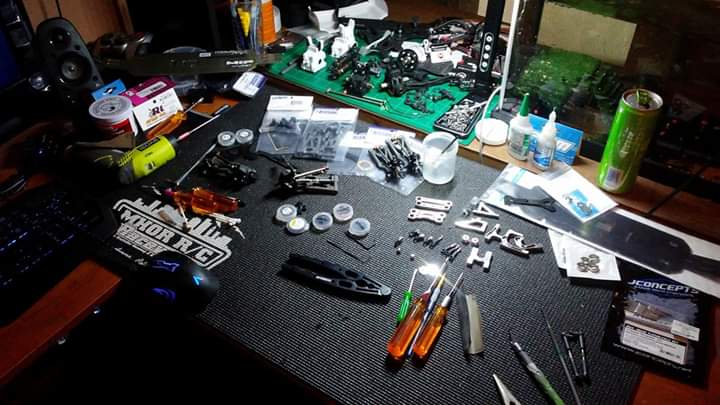 When I began to work in the insurance repair industry years ago, I had the opportunity to work with several former adjusters which helped me understand and appreciate the claims process and the importance of providing as much detail and information as possible during all aspects of the project. I value what I have learned from those I worked with as well as many of the insurance adjusters I have met along the way. When we help customers through the claims process, they rely on our knowledge of the insurance standards and parameters to protect them from unnecessary claims as well as to assist them in making sure all of their damage is covered. Many insurance agents also appreciate our practice of honesty and fairness when performing free inspections prior to claims being turned in. We have kept many of their clients from turning in claims that were unwarranted. We highly value the trust that agents put in us when we are one of the companies that they recommend to their insureds, and we try hard to make sure that each and every customer feels taken care of through the entire process.
When I began to work in the insurance repair industry years ago, I had the opportunity to work with several former adjusters which helped me understand and appreciate the claims process and the importance of providing as much detail and information as possible during all aspects of the project. I value what I have learned from those I worked with as well as many of the insurance adjusters I have met along the way. When we help customers through the claims process, they rely on our knowledge of the insurance standards and parameters to protect them from unnecessary claims as well as to assist them in making sure all of their damage is covered. Many insurance agents also appreciate our practice of honesty and fairness when performing free inspections prior to claims being turned in. We have kept many of their clients from turning in claims that were unwarranted. We highly value the trust that agents put in us when we are one of the companies that they recommend to their insureds, and we try hard to make sure that each and every customer feels taken care of through the entire process.
My partner Mark and I began working together in this industry back in 2011. Working together in CONCISE CONSTRUCTION has been a great opportunity to blend our knowledge and experience in this industry which enables us to be one of the more trusted “local” companies. I feel very privileged to work with someone like Mark who shares my commitment to excellence and professionalism with our customers and agents that we work with. With our company, you are not just another number. We care and will work hard to win the trust of each customer we have the opportunity to assist throughout the claims repair process.
When I am not at work, I am usually outdoors with my wife/best friend. If it is outdoors we love it, whether it is climbing a 14er, m ountain biking, hunting, fishing, skiing, backpacking, camping, disk golf… you get the picture. We also like concerts at Red Rocks, traveling, hitting a hot springs once in a while and seeing all that our beautiful state has to offer.
ountain biking, hunting, fishing, skiing, backpacking, camping, disk golf… you get the picture. We also like concerts at Red Rocks, traveling, hitting a hot springs once in a while and seeing all that our beautiful state has to offer.


 scontinued and is no longer manufactured. As a result, even a modestly damaged T-lock roof may be replaced completely by your insurance company due to the fact that it cannot be repaired with like material. Due to this situation some insurance companies are raising premiums and deductibles for homes with T-lock roofs. If you suspect your T-lock roof may be damaged, it is important to contact us immediately to start the replacement process and avoid any insurance rate increases.
scontinued and is no longer manufactured. As a result, even a modestly damaged T-lock roof may be replaced completely by your insurance company due to the fact that it cannot be repaired with like material. Due to this situation some insurance companies are raising premiums and deductibles for homes with T-lock roofs. If you suspect your T-lock roof may be damaged, it is important to contact us immediately to start the replacement process and avoid any insurance rate increases.
 e fact that it is prone to wind damage. Also, as the three tab ages, it becomes more brittle and susceptible to hail damage from minor hail storms. Many ordinances require an upgrade to a more wind resistant shingle. A hail storm or significant or wind storm can create enough damage to warrant roof replacement to this type of shingle.
e fact that it is prone to wind damage. Also, as the three tab ages, it becomes more brittle and susceptible to hail damage from minor hail storms. Many ordinances require an upgrade to a more wind resistant shingle. A hail storm or significant or wind storm can create enough damage to warrant roof replacement to this type of shingle.
 come the shingle of choice in recent years due to its denser composition, increased resistance to wind and natural look. Many ordinances require Architectural shingles due to their ability to resist wind speeds of up to 110 mph. Architectural shingles are available in many types and styles including 30, 40 and 50 yr. and impact resistant.
come the shingle of choice in recent years due to its denser composition, increased resistance to wind and natural look. Many ordinances require Architectural shingles due to their ability to resist wind speeds of up to 110 mph. Architectural shingles are available in many types and styles including 30, 40 and 50 yr. and impact resistant.
 eristics are similar in that they are very durable and have long lifespans. Clay tile is much heavier than concrete tile, and both can break when being walked on making routine maintenance like painting or cleaning rain gutters a challenge.
eristics are similar in that they are very durable and have long lifespans. Clay tile is much heavier than concrete tile, and both can break when being walked on making routine maintenance like painting or cleaning rain gutters a challenge.
 pular one is called modified bitumen. Modified bitumen is rolled on your roof and is relatively strong due to its layers of polyester and fiberglass.
pular one is called modified bitumen. Modified bitumen is rolled on your roof and is relatively strong due to its layers of polyester and fiberglass.




 me a great understanding of how the insurance process works and how to create the best possible outcomes for all parties involved. Working directly with many different insurance companies taught me how the insurance industry works as a whole and how to achieve result quickly and efficiently. After spending time working with insurance companies and claims adjustments, I moved out into the field to start helping homeowners achieve their dreams of how they wanted their house to look. Providing homeowners with a fantastic service, honesty, integrity and transparency is my goal every time I interact with a homeowner or business owner. Sometimes it can be tough to understand everything that is detailed in an insurance claim. I pride myself on being there for a homeowner or a business owner to sit down with them, help
me a great understanding of how the insurance process works and how to create the best possible outcomes for all parties involved. Working directly with many different insurance companies taught me how the insurance industry works as a whole and how to achieve result quickly and efficiently. After spending time working with insurance companies and claims adjustments, I moved out into the field to start helping homeowners achieve their dreams of how they wanted their house to look. Providing homeowners with a fantastic service, honesty, integrity and transparency is my goal every time I interact with a homeowner or business owner. Sometimes it can be tough to understand everything that is detailed in an insurance claim. I pride myself on being there for a homeowner or a business owner to sit down with them, help them understand the process, explain what their options are and also help them to achieve their vision of their perfect home or business. I thoroughly enjoy meeting new people and being able to help them navigate throughall that an insurance claim entails. I am grateful to also have helped many insurance agents and real estate agents with problem solving some of the issues that come up with trying to insure a home or getting a home sold.
them understand the process, explain what their options are and also help them to achieve their vision of their perfect home or business. I thoroughly enjoy meeting new people and being able to help them navigate throughall that an insurance claim entails. I am grateful to also have helped many insurance agents and real estate agents with problem solving some of the issues that come up with trying to insure a home or getting a home sold.





 real estate projects before I s
real estate projects before I s


 When I began to work in the insurance repair industry years ago, I had the opportunity to work with several former adjusters which helped me understand and appreciate the claims process and the importance of providing as much detail and information as possible during all aspects of the project. I value what I have learned from those I worked with as well as many of the insurance adjusters I have met along the way. When we help customers through the claims process, they rely on our knowledge of the insurance standards and parameters to protect them from unnecessary claims as well as to assist them in making sure all of their damage is covered. Many insurance agents also appreciate our practice of honesty and fairness when performing free inspections prior to claims being turned in. We have kept many of their clients from turning in claims that were unwarranted. We highly value the trust that agents put in us when we are one of the companies that they recommend to their insureds, and we try hard to make sure that each and every customer feels taken care of through the entire process.
When I began to work in the insurance repair industry years ago, I had the opportunity to work with several former adjusters which helped me understand and appreciate the claims process and the importance of providing as much detail and information as possible during all aspects of the project. I value what I have learned from those I worked with as well as many of the insurance adjusters I have met along the way. When we help customers through the claims process, they rely on our knowledge of the insurance standards and parameters to protect them from unnecessary claims as well as to assist them in making sure all of their damage is covered. Many insurance agents also appreciate our practice of honesty and fairness when performing free inspections prior to claims being turned in. We have kept many of their clients from turning in claims that were unwarranted. We highly value the trust that agents put in us when we are one of the companies that they recommend to their insureds, and we try hard to make sure that each and every customer feels taken care of through the entire process.








 My name is Devon and I have been in the roofing industry for 2 years. I began working on the production side and helped manage the crews in the field. I really enjoy working with customers and ensuring that each project is completed in a timely manner from start to finish. I also appreciate being a part of the Concise family and I share the company’s focus on quality workmanship and communication. When I am not working I like to be outside enjoying all that Colorado has to offer. My hobbies include snowboarding, mountain biking, hiking and fishing.
My name is Devon and I have been in the roofing industry for 2 years. I began working on the production side and helped manage the crews in the field. I really enjoy working with customers and ensuring that each project is completed in a timely manner from start to finish. I also appreciate being a part of the Concise family and I share the company’s focus on quality workmanship and communication. When I am not working I like to be outside enjoying all that Colorado has to offer. My hobbies include snowboarding, mountain biking, hiking and fishing. I was born and raised in sunny Southern California. At the age of 17, I enlisted in the United States Navy, and as a Boatswain’s Mate I learned the value of hard work and discipline. After the Navy, I began my construction career, honing my skills in concrete and masonry. I later joined the Union as a Journeyman Carpenter. During this time, I learned many facets of the construction industry, including roofing. I was then given the opportunity to come to Colorado to work for Concise Construction. Being a project manager for the company is a privilege, and I feel that I am able to help not only my clients, but also my neighbors in assisting them throughout the insurance claim process. Driven by my strong faith and high moral standards, I believe that Concise is a good fit for me because they too have a sense of obligation to their clients that I feel very comfortable with. When I am not working, I spend time with my beautiful wife exploring the outdoors or just hanging with good friends.
I was born and raised in sunny Southern California. At the age of 17, I enlisted in the United States Navy, and as a Boatswain’s Mate I learned the value of hard work and discipline. After the Navy, I began my construction career, honing my skills in concrete and masonry. I later joined the Union as a Journeyman Carpenter. During this time, I learned many facets of the construction industry, including roofing. I was then given the opportunity to come to Colorado to work for Concise Construction. Being a project manager for the company is a privilege, and I feel that I am able to help not only my clients, but also my neighbors in assisting them throughout the insurance claim process. Driven by my strong faith and high moral standards, I believe that Concise is a good fit for me because they too have a sense of obligation to their clients that I feel very comfortable with. When I am not working, I spend time with my beautiful wife exploring the outdoors or just hanging with good friends. Hello, I’m Dwayne and I’m proud to be Production Manager for Concise Construction. I’m a Colorado native and I was born in Denver. I have moved around a bit, but Colorado has always been my home. I like to spend my free time camping, hiking, fishing and anything outside in our beautiful state! I’ve worked in construction since I was 15 and have enjoyed it the whole time. I’ve really enjoyed the time I’ve spent with Concise Construction due to their family-like atmosphere while maintaining a professional environment and producing high quality work.
Hello, I’m Dwayne and I’m proud to be Production Manager for Concise Construction. I’m a Colorado native and I was born in Denver. I have moved around a bit, but Colorado has always been my home. I like to spend my free time camping, hiking, fishing and anything outside in our beautiful state! I’ve worked in construction since I was 15 and have enjoyed it the whole time. I’ve really enjoyed the time I’ve spent with Concise Construction due to their family-like atmosphere while maintaining a professional environment and producing high quality work.